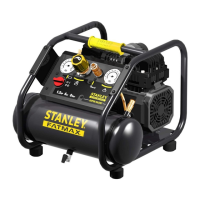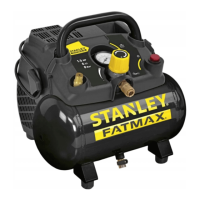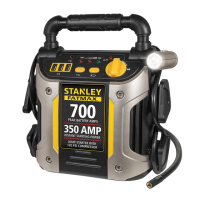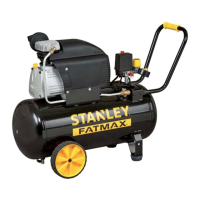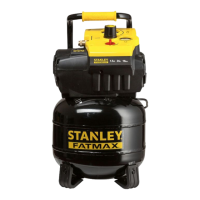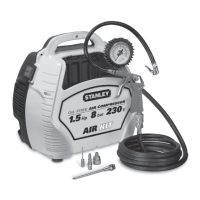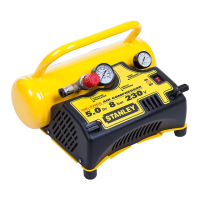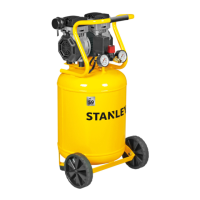4
English
SAVE THESE INSTRUCTIONS
DANGER: RISK OF EXPLOSION OR FIRE
WHAT CAN HAPPEN HOW TO PREVENT IT
• Itisnormalforelectrical
contacts within the motor
and pressure switch to
spark.
• Alwaysoperatethecompres-
sor in a well ventilated area
free of combustible materials,
gasoline, or solvent vapors.
• Ifelectricalsparksfrom
compressor come into con-
tact with flammable vapors,
they may ignite, causing fire
or explosion.
• Ifsprayingflammablemateri-
als, locate compressor at
least 20 feet (6.1 m) away
from spray area. An addi-
tional length of hose may be
required.
• Storeflammablematerialsin
a secure location away from
compressor.
• Restrictinganyofthecom-
pressor ventilation openings
will cause serious overheat-
ing and could cause fire.
• Neverplaceobjectsagainst
or on top of compressor.
• Operatecompressorin
an open area at least 12"
(30.5 cm) away from any
wall or obstruction that would
restrict the flow of fresh air to
the ventilation openings.
• Operatecompressorina
clean, dry well ventilated area.
Do not operate unit indoors or
in any confined area.
• Unattendedoperationof
this product could result in
personalinjuryorproperty
damage. To reduce the risk
of fire, do not allow the
compressor to operate unat-
tended.
• Alwaysremaininattendance
with the product when it is
operating.
• Always turn off and unplug
unit when not in use.
DANGER: RISK TO BREATHING (ASPHYXIATION)
WHAT CAN HAPPEN HOW TO PREVENT IT
• Thecompressedairdirectly
from your compressor is not
safe for breathing. The air
stream may contain carbon
monoxide, toxic vapors,
or solid particles from the
air tank. Breathing these
contaminant's can cause
seriousinjuryordeath.
• Neveruseairobtaineddirectly
from the compressor to supply
air for human consumption.
The compressor is not
equipped with suitable filters
and in-line safety equipment
for human consumption.
• Exposuretochemicals
in dust created by
power sanding, sawing,
grinding, drilling, and other
construction activities may be
harmful.
• Sprayedmaterialssuchas
paint, paint solvents, paint
remover, insecticides, weed
killers, may contain harmful
vapors and poisons.
• Workinanareawithgood
cross ventilation. Read and
follow the safety instructions
provided on the label or safety
data sheets for the materials
you are spraying. Always use
certified safety equipment:
OSHA/MSHA/NIOSH
respiratory protection designed
for use with your specific
application.

